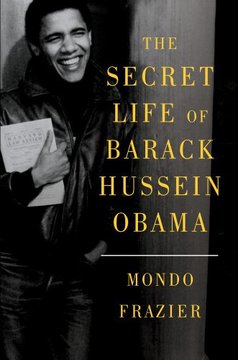
"A Man's Home is his Castle."
--A proverbial expression that illustrates the principle of individual privacy, which is fundamental to the American system of government. In this regard, the Fourth Amendment to the United States Constitution — part of the Bill of Rights — prohibits “unreasonable searches and seizures.”
Last month in Atlanta, a SWAT Team raided the home of--a DJ?
Last night, a federal SWAT team assisted the RIAA in a raid on the studio of Atlanta musician DJ Drama.
Assuming for a moment that RIAA and federal officials do indeed know the difference between a mash-up DJ and a bootleg operation, and that they did find evidence of actual piracy in the bust, there’s still the problem of why RIAA officials were participating in a police action, and why a SWAT team was used to raid a professional studio under investigation for a nonviolent, white-collar crime.
Every two weeks, on average, somewhere in the U.S., a SWAT Team breaks into the house of an innocent person--in many cases, killing them.
According to Michigan State University:
All over the country local police forces are fielding high-tech, heavily armed SWAT teams to handle non-crisis situations. Within the police, these elite, highly militarized units have fueled a culture of violence and racial antagonism.

In the last 22 years, there have been 299 SWAT Team raids in the United States on the homes or apartments of innocent Americans.
Many of these have resulted in the death of people whose only crime was that they were at the wrong place at the wrong time.
According to the Cato Instute:
Americans have long maintained that a man’s home is his castle and that he has the right to defend it from unlawful intruders. Unfortunately, that right may be disappearing.
Over the last 25 years, America has seen a disturbing militarization of its civilian law enforcement, along with a dramatic and unsettling rise in the use of paramilitary police units (most commonly called Special Weapons and Tactics, or SWAT) for routine police work.
The most common use of SWAT teams today is to serve narcotics warrants, usually with forced, unannounced entry into the home.
These increasingly frequent raids, 40,000 per year by one estimate, are needlessly subjecting nonviolent drug offenders, bystanders, and wrongly targeted civilians to the terror of having their homes invaded while they’re sleeping, usually by teams of heavily armed paramilitary units dressed not as police officers but as soldiers.
These raids bring unnecessary violence and provocation to nonviolent drug offenders, many of whom were guilty of only misdemeanors. The raids terrorize innocents when police mistakenly target the wrong residence. And they have resulted in dozens of needless deaths and injuries, not only of drug offenders, but also of police officers, children, bystanders, and innocent suspects.
Almost 2 years ago, a SWAT Team was used to arrest--Tibetan monks?
Some Tibetan monks on a peace mission in Omaha were recently raided by immigration officials in riot gear

brought in to count local election ballots.
In many of the cases, the police offer no apologies--even in cases where they've killed an innocent person--for behavior that would land them in prison if they weren't in uniform.
In most cases, there's no penalty for the police involved.
In no other instance, does "it's a mistake" serve as a defense in a court of law.
Two very disturbing trends in law enforcement are the use of SWAT Teams on routine police matters--serving warrants, for instance--and the use of SWAT Teams in small towns and villages, where violent crime is rare.
Police maintain that there's no problem. The families of police SWAT Team raids on the wrong house beg to differ.

The statistics for botched SWAT Team raids since 2000:  2007 - 15 2006 - 23 2005 - 24 2004 - 16 2003 - 23 2002 - 26 2001 - 20 2000 - 18 |
Some recent instances in which SWAT Teams killed innocent Americans.
The recent killing of an unarmed Virginia doctor has raised concerns about what some say is an explosion in the use of military-style police Swat teams in the United States.
Armed with assault rifles, stun grenades - even armoured personnel carriers - units once used only in highly volatile situations are increasingly being deployed on more routine police missions.
Dr Salvatore Culosi Jr had come out of his townhouse to meet an undercover policeman when he was shot through the chest by a Special Weapons and Tactics force.
It was about 2135 on a chilly January evening. The 37-year-old optometrist was unarmed, he had no history of violence and displayed no threatening behaviour.
But he had been under investigation for illegal gambling and in line with a local police policy on "organised crime" raids, the heavily armed team was there to serve a search warrant.
As officers approached with their weapons drawn, tragedy struck. A handgun was accidentally discharged, fatally wounding Dr Culosi.
Two months on, investigations into the incident are still continuing, a delay which Dr Culosi's family says is compounding the "horror and burden of it all".
Salvatore Culosi Sr, the dead man's father, told the BBC: "I never knew him to carry so much as a pocket knife so it bewilders me how a detective could spend three months investigating my son and not know he is a pussy cat.
"If anything comes out of this it must be that another family does not experience this pain and anguish for absolutely no reason.
"Policy needs to change so these kinds of accidents never occur again."
But it likely won't: once government acquires power, it almost never gives it back again, absent force.
"What we find is that when Swat teams go out, shootings go down."
--John Gnagey, National Tactical Officers AssociationGnagley offers no evidence for his assertions.
Opponents offer plenty, with more on the way as the number of SWAT Teams interacting with the people they're supposed to "Serve and Protect" rising dramatically the last twenty years.
Professor Peter Kraska, an expert on police militarisation from Eastern Kentucky University, says that in the 1980s there were about 3,000 Swat team deployments annually across the US, but says now there are at least 40,000 per year.
"I have no problem with using these paramilitary style squads to go after known violent, armed criminals, but it is an extreme tactic to use against other sorts of suspects," he said.
Dr Kraska believes there has been an explosion of units in smaller towns and cities, where training and operational standards may not be as high as large cities - a growth he attributes to "the hysteria" of the country's war on drugs.
"I get several calls a month from people asking about local incidents - wrong address raids, excessive use of force, wrongful shootings - this stuff is happening all the time," he adds.
John Gnagey, executive director of the National Tactical Officers Association, told the BBC: "What we find is that when Swat teams go out, shootings go down.
"We don't see it as escalating anything. We see it as reducing violence."
Interesting take.
Of course, Gnagey's take might be a completely different one if he were on the receiving end of a wrongful raid.
And there is some reason to believe that pranksters are making an effort to get SWAT Teams called out on neighbors--or those they don't know--for kicks.
Called "swatting" - for the callers' efforts to get a SWAT team to respond to their pranks - this relatively new cyber crime has piqued the interest of authorities nationwide. In it, cyber criminals make prank life-and-death 911 calls that appear to be originating from others' homes.
A recent SWAT Team kill was Daniel Castillo, an unarmed teenager that a SWAT woke up from sleeping and then shot and killed--while his sister watched, holding a 1-year-old baby.
According to [Rick] Dovalina [head of the local LULAC chapter], police say they found what appear to be stems and seeds of marijuana, either in the Castillo home or in the yard behind it. Contrary to earlier reports, the victim’s father, Daniel Castillo, Sr. was not arrested or charged with a crime.
Police did arrest a man in a white pick-up truck outside the house. The man was apparently dating one of the victim’s sisters, and police claim they found crack cocaine in the vehicle.
Dovalina says Daniel Castillo, Jr. was unarmed, had no criminal record, and according to his father, was not involved in the drug trade. The police affidavit for the search warrant claims an unidentified informant saw crack being sold from the house. It names “David Castillo” as a possible suspect, then later, “Daniel Castillo.” That tip and police observations of “traffic” at the Castillo home formed the basis of the forced-entry SWAT raid. No one but the police knows the identity of the informant.
According to his sister, Castillo was shot just below the eye as he rose up from his bed after hearing her scream. She was holding a 1-year-old child just a few feet from the shooting.

in particularly disturbing circumstances.
The Agitator has a particularly good file of stories on SWAT Teams killing innocent Americans. # Xavier Bennett: In 1991, police in Dekalb County conduct a 2:30am no-knock raid on the home of Bobby Bowman, a man they suspect of possessing cocaine. They were right. He did, though only enough to identify him as a user, not a dealer. What they didn’t expect is that his 8-year-old stepson Xavier Bennett would be inside, too. When Bowman, who says he thought he was being invaded, met police with a gun, the boy was killed in the crossfire. No disciplinary actions were taken against the police. So police conduct a dangerous no-knock on a home where a child’s inside. The child dies. Police blame the father of the child for (1) possessing cocaine, and (2) not realizing the raiding party was police. # Lynette Gayle Jackson: On September 22, 2000, police in Riverdale, Georgia shoot and kill Lynette Gayle Jackson in an early morning, no-knock drug raid. Less than a month earlier, Jackson had been at home when burglars broke into the same house. She escaped out a window and called the police while the intruders ransacked her home. When police arrived to answer the burglary call, they found a small bag of cocaine in the bedroom that belonged to Jackson’s boyfriend. While the quantity of cocaine wasn’t sufficient to press charges, police began a subsequent investigation of Jackson’s boyfriend that led to the September no-knock raid on her home. As that raid transpired, Jackson, believing she was being robbed again, held a gun in her bedroom as the SWAT team entered. That’s when the police opened fire, killing her. Her maintenance man later told reporters she had been frightened by the previous burglary. Jackson had asked him to install new locks, security bars on her windows, and a motion-detecting security light. The man told the Atlanta Journal and Constitution, “I think she was scared and she probably thought it was another break-in.” No disciplinary action was taken against the officers. So police raid the home of an innocent woman while looking for her boyfriend. She mistakes them for intruders (justifiably so, after having just been burgled), and is shot and killed. It’s all her fault. Shouldn’t have been dating a man who uses cocaine. Shouldn’t have had a gun for home protection. Shouldn’t have been scared. Shouldn’t have assumed that when armed men break into your home, it’s probably the burglars who broke in last time, not police looking for your small-time, dope-using boyfriend. Source: Joshua B. Good, “Fulton woman slain during drug raid; Officers open fire after victim grabbed gun as they burst into bedroom of her Riverdale home,” Atlanta Journal-Constitution, September 23, 2000, p. E3. # Roy and Belinda Baker. Early in the morning on September 30, 2005, police in Stockbridge, Georgia conduct a no-knock raid on the home of Roy and Belinda Baker. Officers break down the couple’s front door with a battering ram and toss in flashbang grenades. They hold the couple at gunpoint, handcuff them, and then send them out onto their porch, only partially clothed. Police ruin a family Bible and antique coffee table during the raid. Police eventually realize the intended target of the raid lives next door. Police Chief Russ Abernathy called the raid “inexcusable” and “not acceptable,” and blamed poor street lighting. But Abernathy added that no one would be fired of disciplined, and that the raids would go on, albeit after “reviewing procedures.” The Bakers are considering a lawsuit. So police conduct a raid on the wrong home. Had Roy or Belinda Baker owned a gun, one or both might be dead. But since no one was hurt, no harm was done, and it’s really no one’s fault. So there’s no need to assign blame. No one is punished for terrorizing two innocent people. Sources: Kathy Jefcoats, “Henry police raid ‘inexcusable’; Couple gets wake-up call meant for their neighbor,” Atlanta Journal-Constitution, October 6, 2005; Kathy Jefcoats, “Suit threatened in raid ‘mistake,’” Atlanta Journal-Constitution, March 4, 2006. # Deputy Joseph Whitehead. In 2006, police in Macon conduct a 1:30 am raid on a suspected drug house. Residents of the house say they were startled from sleep, believed they were being robbed, and shot to defend themselves. In the process, the shoot and kill Dep. Whitehead. Once the resident realize they’re being raided by police and not gang members, they surrender immediately. Prosecutors charge all five residents with murder, including two who had nothing to do with the shooting, one who wasn’t even home at the time of the raid. Two face the death penalty. The sheriff later says of the raid, “It just went wrong.” So if you mistake midnight-raiding police for intruders and there are drugs in your home, your mistake means the death penalty. If your roommates possess drugs and mistake raiding police for intruders and shoot and kill an officer, you’re looking at a murder charge. Source: Phillip Ramati and Joe Kovac Jr., “‘It just went wrong,’ sheriff says of slaying,” Macon Telegraph, April 5, 2006. Let’s leave Georgia, and look at some other cases: # Charles Irwin Potts. On September 4, 1998, police in Charlotte, North Carolina deploy a flashbang grenade and carry out a no-knock warrant for cocaine distribution on a tip from an informant. By the end of the raid, police have put four bullets in 56-year-old Charles Irwin Potts, killing him. Potts was not the target of the raid. He had visited the house to play a game of cards with friends. Police say Potts drew his gun (which he carried legally) and pointed it at them when they broke into the home. The three men in the house who saw the raid disagree, and say the gun never left Potts’ holster. Police found no cocaine, and made no arrests as a result of the raid. The men inside the house at the time of the raid thought they were being invaded by criminals. “Only thing I heard was a big boom,” said Robert Junior Hardin, the original target of the raid. “The lights went off and then they came back on . . . everybody reacted. We thought the house was being robbed.” No disciplinary action was taken against the police for Potts’ death. So if you’re a completely innocent man in someone else’s home who mistakes invading police for intruders (assuming the police account is correct, not the account of the men inside) and draw your gun in self-defense, the punishment for your mistake is death. And the police, who are raiding to enforce a consensual crime, are right to shoot you. Sources: Leigh Dyer, “Anatomy of a Deadly SWAT Raid,” Charlotte Observer, September 9, 1998, p. C1; Leigh Dyer, “SWAT Team Serves Risky Warrants, Often Uses Flashbang Devices,” Charlotte Observer, September 9, 1998, p. 4C; Gary L. Wright and Leigh Dyer, “No charges in 2 police killings,” Charlotte Observer, November 4, 1998, p. C1. Cheryl Lynn Noel. In January 2005, police in Baltimore conduct an early-morning, no-knock raid on the the Noel home after finding marijuana seeds and traces of cocaine in the family trash. Noel, who’s step-daughter had been murdered years earlier, retrieves a legally registered handgun when she hears the sound of home invaders rushing up her steps. A SWAT officer kicks open her door, and Noel, in her nightgown, is clutching the gun, not pointed, when he enters. The SWAT officer, wearing a bulletproof vest and helmet, and carrying a bulletproof ballistics shield, hits Noel twice from the doorway, then shoots her a third time from point-blank range. She dies. Noel had no criminal record (her husband did, but his offense took place 35 years ago). She conducted Bible-study classes on her lunch breaks. Twenty months after the raid, and probably not coincidentally just weeks after the Noel family filed a civil rights suit, the Baltimore County Police Department awarded the officer who shot and killed Noel a medal for “bravery, courage, and valor” in shooting her. So if you’re a woman whose daughter has been murdered, and you mistake raiding police for criminal intruders, your punishment is death, and the officer who shoots you not only isn’t disciplined, he’s given an award. Sources: Joseph M. Giordano, “Woman is shot, killed by police in drug raid,” Dundalk Eagle, January 27, 2005; Joseph M. Giordano, “Petition reflects anguish,” Dundalk Eagle, March 31, 2005; my own reporting. # Tony Martinez. On December 20, 2001, police in Travis County, Texas storm a mobile home on a no-knock drug warrant. Nineteen-year-old Tony Martinez, nephew of the man named in the warrant, is asleep on the couch at the time of the raid. Martinez was never suspected of any crime. When Martinez rises from the couch as police break into the home, deputy Derek Hill shoots Martinez in the chest, killing him. Martinez is unarmed. A grand jury later declines to indict Hill in the shooting, and he continues his employment wit the police department. The same Travis County paramilitary unit would later erroneously raid a woman’s home after mistaking ragweed for marijuana plants. So if police conduct a no-knock raid and mistakenly kill a completely innocent, unarmed person, it’s no one’s fault, because these raids are naturally dangerous and volatile, and it’s easy to see how mistaken identity might happen. Sources: Clair Osborn, “Survivors sue Travis county over fatal raid,” Austin American-Statesman, May 10, 2003, p. B1; Claire Osborn, “Deputy not indicted in drug raid death,” Austin American-Statesman, April 4, 2002. # Edwin Delamora. On February 15, 2001, the same task force that would later mistakenly shoot and kill Tony Martinez raids the Del Valle, Texas mobile home of Edwin Delamora, who lives with his wife and two children. As two deputies beat down his door with a battering ram, Delamora fires through the door, fearing he is under attack. His wife is on the phone with 911 at the time he fires. One bullet from his gun strikes and kills sheriff’s deputy Keith Ruiz. Delamora had no previous criminal record, and his defense says the raid on his home was influenced by an anonymous informant who turned out to be the brother of two sheriff’s deputies. Information about the informant’s relationship with the police was suppressed at trial. Delamora was eventually convicted of capital murder, and sentenced to life in prison. Police found less than an ounce of methamphetamine and one ounce of marijuana in his home. Prosecutors declined to seek the death penalty because of substantial doubt about whether or not Delamora knew the people outside his door were police. That decision sparked heavy criticism from Texas Attorney General John Cornyn (now a U.S. Senator), who moved for a law requiring the death penalty to be an option in any capital murder case. Time magazine would later report that people in the community were suspicious of the narcotics task force, describing the team’s general attitude as “those task-force guys were Rambo wannabes.” So if men are attempting to break into your home, and you mistake them for criminal intruders — bolstered by the fact that your wife calls 911 — you get no deference for the volatility or confrontational nature of SWAT raids. Mistake a cop for an intruder when firing your gun, and you’re going to jail for a long, long time. And God help you if there’s some dope in your house, too. When a member of the same SWAT team later mistakes and unarmed, innocent man for a deadly threat, and consequently shoots and kills him, the police officer won’t even be disciplined, much less sent to jail. Sources: John Cloud, “Guarding Death’s Door,” Time, July 14, 2003; Jordan Smith, “Another Drug War Casualty,” Austin Chronicle, July 19, 2002; “Delamora attorney says key facts were withheld,” Austin American-Statesman, July 29, 2002, p. A1; “Cornyn: Death penalty must be option when officer killed,” Associated Press, July 25, 2002. # Jose Colon: On April 19, 2002, police prepare to conduct a heavily-armed late-night drug raid (it includes a helicopter) on a home in Bellport, New York. As four paramilitary unit officers rush across the front lawn, 19 year-old Jose Colon emerges from the targeted house. According to the police account of the raid, as officers approach, one of them trips over a tree root, then falls forward, into the lead officer, causing his gun to accidentally discharge three times. One of the three bullets hits Colon in the side of the head, killing him. Colon was never suspected of buying or selling drugs, and had no criminal record. Police proceede with the raid, and seized eight ounces of marijuana. A subsequent investigation finds no wrongdoing on the part of police. Colon was months away from becoming the first member of his family to earn a bachelor’s degree. So, again, if a completely innocent person is killed in one of these raids due to police error, we’re supposed to be forgiving and understanding. Sometimes bad things happen with guns, I guess. Sources: Samuel Bruchey, “Victim’s girlfriend says shooting wasn’t an accident,” Newsday, April 26, 2002; Samuel Bruchey, “Cops’ account disputed again,” Newsday, April 27, 2002; Bruce Lambert, “No indictment in shooting of young man in Suffolk raid,” New York Times, August 9, 2002. # Meredith “Buddy” Sutherland. On October 4, 2002, police raid a home in Windsor, Pennsylvania on suspicion of drug activity. Once inside, police go from room to room in the dark home. Trooper Gregory Broaddus enters a bedroom where Meredith “Buddy” Sutherland, Jr. is sleeping. Sutherland doesn’t live in the house, but is visiting a friend. Officer Broaddus mistakenly believes Sutherland to be clutching a weapon when he enters the room, and fires, striking Sutherland. Sutherland has no weapon, and would never be charged with a crime. He spent 11 days in a coma, and nearly three weeks in the hospital. Other occupants of the home were eventually charged with drug crimes. Sutherland sued in June 2004 for redress for his injuries. The state attorney general in turn asked that the suit be dismissed, arguing that the officer in question had qualified immunity, and that, incredulously, Sutherland himself was responsible for his own injuries. So if you are an innocent person visiting a friend whose roommates are involved in drug activity, if a police officer mistakes something you’re holding as you’re lying in your bed for a gun, it’s your fault for, I guess, lying there so guilty-looking, and your punishment is eleven days in a coma. Sources: Elizabeth Evans, “Man sues over drug-raid injury; SWAT-type team hit Windsor home,” York Dispatch, June 9, 2004. Elizabeth Evans, “Shooting victim home; Family of man wounded in raid considers lawsuit,” York Dispatch, October 23, 2002. # James Hoskins. In February 2004, Middletown, Pennsylvania police storm the home of James Hoskins on a drug warrant. They are looking for Hoskins’ brother Jim, whom they eventually arrest for possessing “a small amount of marijuana, a glass pipe, and about $622,” according to the Philadelphia Inquirer. From his bed, Hoskins hears the loud thud of police breaking into his home. Naked and unarmed, he gets up to investigate. As he approaches the door, a Middletown detective pushes his way into Hoskins’ bedroom. Hoskins and his girlfriend say the detective never identified himself. The detective fires, and later explains that he mistook the t-shirt Hoskins was using to cover his genitals for a gun. The bullet enters Hoskins’ abdomen, and rips through his stomach, small intestine, and colon. It eventually lodges in his leg, which must later be amputated. It isn’t until weeks later, after he emerges from a coma, that Hoskins learns the man who shot him is a police officer, and not a criminal intruder. Remarkably, the Middletown Township police department saw no need to conduct an internal investigation of the shooting until prodded by the district attorney. The officer who shot Hoskins would never be disciplined. So if a police officer mistakes a t-shirt for a gun and shoots an innocent man, we should give him the benefit of the doubt, given the volatile and confrontational nature of SWAT raids. Sources: Larry King, “Man shot in apartment by police hopes for justice,” Philadelphia Inquirer, April 7, 2004; “Pennsylvania Police Fail To Investigate Shooting of Unarmed Man,” Associated Press, September 3, 2004; Laurie Mason and Harry Yanoshak, “Cop cleared in shooting of unarmed man,” Bucks County Courier Times, April 23, 2004; Larry King, “Middletown settles police shooting; A Bristol Twp. Man had sued after a Feb. raid targeting his brother left him without his left leg,” Philadelphia Inquirer, January 16, 2005, p. B8. # Edward Benavides. In November 1993, police in Houston, Texas conduct a pre-dawn no-knock raid on the home of 21-year-old Edward John Benavides. As Officer Leslie I. Early enters the room where Benavides is sleeping, Benavides awakes, grabs his gun, points it at the door, and fires. Early is struck and killed. Upon realizing the raiders are police, Benavides immediately surrenders himself. A subsequent investigative report by the Houston Chronicle found significant problems with the police investigation and execution of the raid, not least of which was the fact that Benavides didn’t know it was police officers who were invading his home until after he’d fired. One officer told the paper, “I think the Task Force may have had more to do with getting [Officer Early] killed than the kid [Benavides] did.” Police would not tell the paper the identity of the informant whose tip led to the raid, nor would they say whether or how much the informant was paid. Police found some weapons and $290,000 in cash in Benavides’ home (it’s not uncommon for immigrants to carry large amounts of cash), but no drugs. In 1994, a jury convicted Benavides of murder, and sentenced him to life in prison. He wasn’t convicted of capital murder and was spared the death penalty because, according to the Houston Chronicle, “jurors had some doubt he knew pre-dawn raiders were police.” So if you mistake police for criminal intruders, and a jury actually concludes that you probably didn’t know the men breaking down your door were police, and you consequently shoot and kill one of them, you can still go to prison for life. Because you should have known better. You don’t get the benefit that comes with the volatility and confrontational nature of these raids, because you aren’t a police officer. Source: Jennifer Liebrum, “Life imprisonment for convicted killer; Man found guilty in death of officer,” Houston Chronicle, September 23, 1994, p. A34; S.K. Bardwell, “New evidence surfaces in flawed SWAT drug raid,” Houston Chronicle, June 5, 1994, p. A1. Carl Keane and Chieko Strange December 19, 2006—CA A couple in Petaluma claims that local police and federal DEA agents violated their rights when the agents served a warrant at their home. According to their lawsuit, the agents failed to properly announce their presence or identify themselves, lacked probable cause, and used excessive force. No drugs, drug residue, money or weapons were found on the property. Keane was charged with suspicion of drug trafficking, but the charges were dropped in March 2007. Kathryn Johnston November 21, 2006—GA Acting on a tip from a confidential informant, police conduct a no-knock raid on the home of 88 year old Kathryn Johnston. Johnston, described by neighbors as feeble and afraid to open her door at night, opens fire on officers as they burst into her home. Three of the officers are wounded before Johnston is shot and killed. Relatives say that Johnston lived alone, and legally owned a gun because she was fearful of intruders. She lived in the home for 17 years. Police claim that they find a small amount of marijuana in Johnston's home, but none of the cocaine, computers, money, or equipment described in the affidavit that was used to obtain a warrant. There are now allegations of a police cover-up. |
Google "SWAT Teams" + "wrongful death" and almost 56,000 references come up. Sorting through them is gloomy business. Deaths of innocent people, the police stonewalling in case after case and John Gnagey, the SWAT Teams spokeman, always quoting that there is no problem.
And at the very time this is occurring, groups continue to work to disarm Americans from owning legal firearms.
If a Senator stood up in Congress and told of an outlaw drug gang that burst into innocent American's homes and gunned down unarmed U.S. citizens, it would be front-page news and politicians of both parties would trip over themselves in an effort to look like they 'were doing something about the problem'.
Just because it's being done by those who are supposed to "Serve and Protect" is no excuse for the continuing militarization of the American police.
by Mondoreb
images:
* city of davison
* Answers
* Prison Planet
Sources:
* The Rising use of SWAT Teams: "It's bad, but it's about to get worse"
* Monks arrested in SWAT Team Action
* SWAT Teams Enforcing Copyright
* The Rise of Paramilitary Raids in America
* Cato Institute Raid Map
* Context for Kathryn Johnson
* Death Raises Concern over Police Tactics
* If the SWAT Team Shows Up
* More on Castillo
Death by 1000 Papercuts Front Page.






























No comments:
Post a Comment
Leave your name/nic.
We've changed the comments section to allow non-registered users to comment.
We'll continue like that until it's being abused.
We reserve the right to delete all abusive or otherwise inappropriate comments.